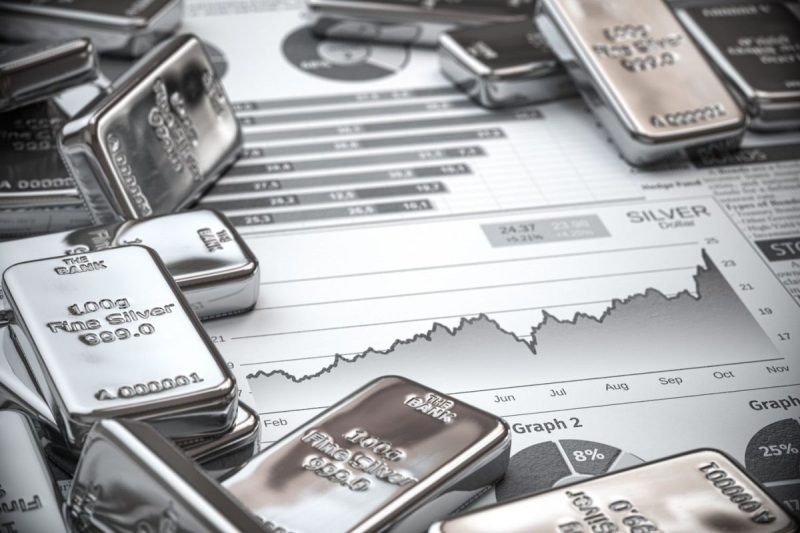**Silver Prices Through History: A Glittering Journey**
Silver, often referred to as the poor man’s gold, has been a prized metal throughout history. Its use in currency, jewelry, and industry has led to fluctuations in its value over time. Let’s delve into the highest price points for silver and how they reflect the economic landscape of their respective eras.
1. **Ancient Civilizations:** Silver’s allure dates back to ancient civilizations like Mesopotamia, Egypt, and Greece. Its scarcity and lustrous appearance made it a coveted material for adornment and trade. During these times, the price of silver was inherently high due to its limited availability and the labor-intensive process required for its extraction.
2. **Silver Rush of the 19th Century:** The 19th century saw a surge in silver mining, particularly in regions like the United States, Mexico, and Peru. The discovery of vast silver deposits led to a significant increase in supply, causing the price of silver to plummet. However, during the silver rush of the late 1800s, the metal experienced a brief spike in value as demand outstripped supply once again.
3. **Silver Market Crash of 1980:** In 1980, the price of silver reached an all-time high of $49.45 per ounce, fueled by speculation and global economic instability. This peak was short-lived, as a combination of factors including government intervention and a sharp drop in demand precipitated a rapid decline in silver prices. The crash of 1980 serves as a cautionary tale of the volatile nature of commodity markets.
4. **Current Trends:** As we look to the present day, silver continues to be a valuable asset for investors and collectors alike. Market fluctuations, geopolitical unrest, and industrial demand all play a role in determining the price of silver. In recent years, silver prices have shown resilience in the face of economic uncertainties, making it a popular choice for diversifying investment portfolios.
5. **Future Outlook:** The future of silver prices remains uncertain, influenced by a myriad of factors such as technological advancements, green energy initiatives, and global economic conditions. As the world transitions towards a more sustainable and digital future, the demand for silver in solar panels, electronics, and other industries is expected to drive prices higher.
In conclusion, the history of silver prices reflects the ever-evolving dynamics of the global economy and human civilization. From ancient times to the modern era, the value of silver has fluctuated in response to supply and demand forces, making it a fascinating commodity to study and invest in. As we venture into the future, the journey of silver prices continues, guided by the winds of change and progress.
